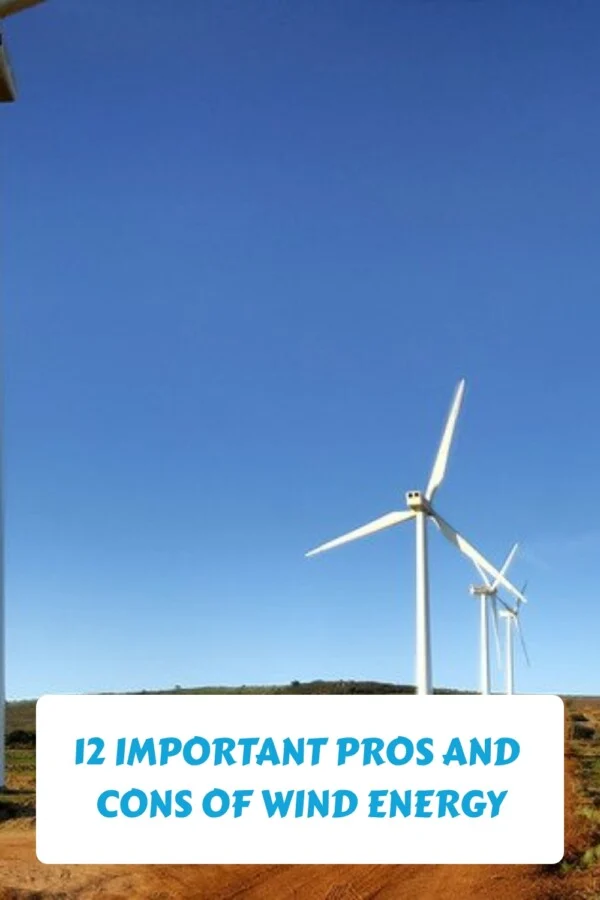Wind energy is a type of renewable energy source that uses the energy from the earth’s surface when heard by the sun. This type of energy is an environmental way to generate electricity when compared to fossil fuels.
There are different types of wind energy that countries, individuals, and companies can utilize to harness energy. Wind turbines capture the highest level of energy, since they can capture fast, low, and varying speeds of wind. On the other hand, wind blades can access the energy from a pocket of low-pressure air. Offshore Wind energy is a new type of energy capture in the world.
But is wind energy better than other competitors in the renewable energy industry? Let’s look at the wind energy pros and cons to see if this technology is effective for generating electricity, limiting greenhouse gasses, and boosting energy efficiency.
Types Of Wind Power
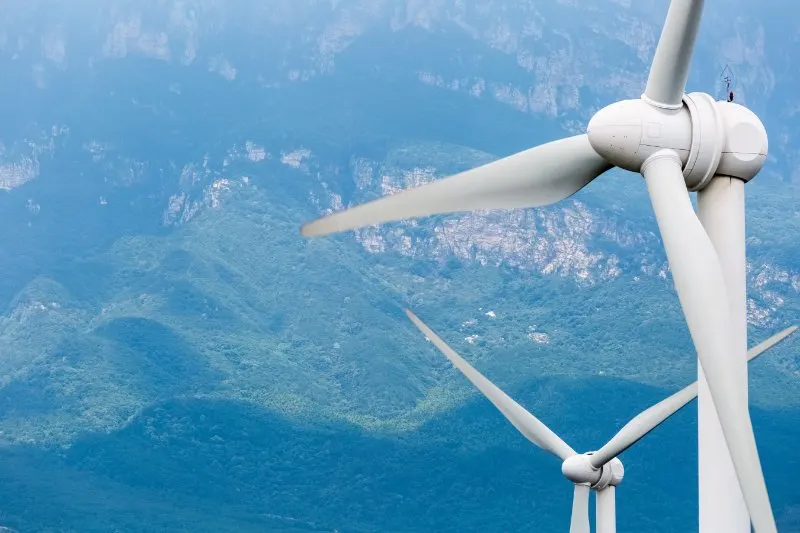
There are a few main types of wind energy usable in today’s world. Let’s go over land-based energy, distributed energy, and offshore energy. Although all three of these systems use wind energy, they operate in different manners.
See Related: Important Pros and Cons of Biofuels to Know
Land-based energy
Land-based wind energy uses wind turbines as stand-alone structures or through a connected wind power source. Turbines can be used within a solar cell system, wind plant, or wind farm. Stand-alone wind farms can be used for communications, reducing electrical reliance, or pumping water.
Residential Energy Turbines
Land-based small turbines can produce enough renewable resources for small homes and residences. These types of turbines usually do not require extra resources or land to implement correctly.
Small Commercial Onsite Energy
Small commercial wind turbines produce a higher level of wind power than residential turbines, which is enough for bigger residences, schools, campuses, hospitals, and farms. Commercial turbines can produce higher levels of wind power and greater efficiency levels, but they also need more consistent and reliable repairs and maintenance.
Commercial Onsite Energy
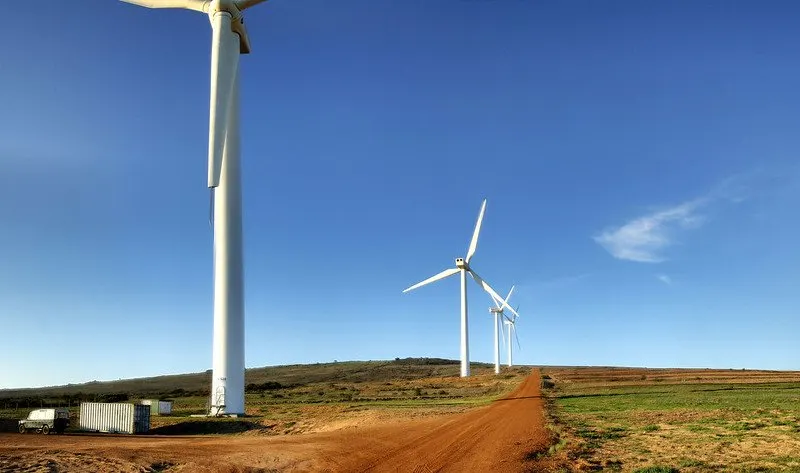
Commercial onsite energy is powerful enough to provide energy to large-scale wind farms, multiple facilities, public loads, or entire communities. This type of wind energy produces between 50-250kW for corporations – but due to the bigger size and requirements, commercial wind energy often requires approvals and financial backing.
Large Commercial or Industrial
Large commercial or industrial wind energy produces between 500kW and 1.5mW of energy for large wind farms. This type of wind energy features large-scale towers, community endorsement, and financial backing from commercial lenders.
Utility-scale Energy
The biggest type of wind energy produces between 1.5 and 7.5mW through high-quality wind turbines, 250-foot towers, and environmental and political coordination. This type of wind energy always requires financial backing, resource allocation, and legal permission.
Distributed
Distributed wind energy involves small wind energy systems that can combine with one another to create large-scale electrical delivery. A single wind turbine can connect within the electrical delivery system to produce energy to an on-site wind farm or in support of another electrical grid.
See Related: How Much Does the United States Depend on Fossil Fuels?
Offshore Wind
Offshore wind turbines use wind turbines in bodies of water to generate more wind power than on-land options and distributed wind technology.
Wind Energy Pros And Cons
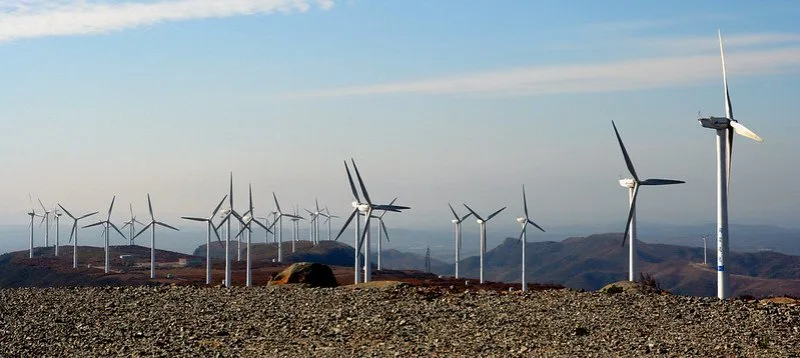
Just like with any type of energy source, there are wind energy pros and cons that can help a person make their final decision if they should use wind farms to access wind’s kinetic energy.
Wind Energy Pros
There are numerous advantages of wind energy, wildlife wind turbines, wind systems, and wind power plants when compared to other types of renewable energy sources.
1. Clean Energy
Wind energy is one of the purest types of kinetic energy that you can harness. Since wind energy doesn’t require any types of natural gas or fuel, the turbines do not produce any greenhouse gasses that can contribute to the decline of the environment. A wind turbine only emits small amounts of greenhouse gas emissions during installation and transport.
2. Free Fuel
Furthermore, wind energy does not require the company or country to purchase fuel in order to power the wind turbine and is completely free of greenhouse gases. The wind turbines run when the wind blows, so there are no external power sources required to make them run. Not only does this reduce the price of using wind turbines, but using wind energy does not require any type of up-front investment.
See Related: Is it too late to stop climate change?
3. Energy efficient
Wind energy is very efficient at harnessing energy — and it continues to develop over time. Technology continually advances and finds new ways to increase a turbine’s size, effectiveness, and noise level. With current wind energy, wind turbines are 20-40% effective at converting wind to energy.
4. Doesn’t disturb pre-existing farms
Digging up the ground to access fossil fuels can disrupt the local land. But using wind energy doesn’t disturb any existing farmland. Instead, building turbines on pre-owned land helps farmers make more money, reduces carbon footprints, and doesn’t disrupt the business or farms’ energy production.
See Related: Important Pros and Cons of Shale Oil
5. Reduces the need for fossil fuels
Using wind energy can reduce the planet’s need for fossil fuels — which is essential, considering the planet will soon run out of these energy sources. However, wind energy cannot be depleted. As long as the sun continues to heat Earth, wind energy will continue to provide wind power.
6. Provides Jobs
Not only is wind energy beneficial for energy consumption and the environment, but building wind turbines can help the local area and the country as a whole provide more job options. The U.S. The Bureau of Labor Statistics stated that technicians working in the wind energy sector are one of the fastest-growing occupations in the country.
See Related: Is It Energy Efficient for Ethernet to be Enabled or Disabled?
7. Economic Growth
Plus, using wind energy is a powerful tool for boosting economic growth within the United States. Last year alone, wind farms provided almost 10% of the country’s total energy and added over $20 billion to the circulating economy.
Wind Energy Cons
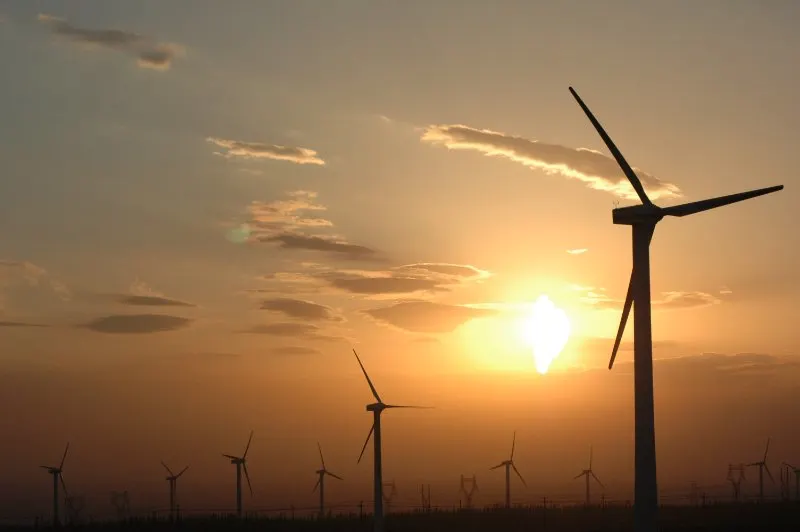
Every type of energy source comes with positives and negatives — the same goes for wind turbines. Wind power pros and cons can deter a company from implementing this new technology.
Although wind energy provides numerous benefits to society and the environment, there are some cons about wind energy and disadvantages of wind energy use.
8. Dangerous to Wildlife
One of the potential drawbacks to using wind energy is a potential disruption to local wildlife. Airborne creatures could hit the structure and be hurt or killed if the turbine is in use. Specific conservation groups are worried that the implementation of wind turbines could severely affect the population of birds and bats.
Furthermore, wildlife that is not airborne can still be affected by the implantation of a wind turbine and the projected noise.
9. Noise and visual pollution
Although the wind turbines are not loud per se, they do emit noise. One of the biggest cons to wind turbines is they can create noise in rural areas that would otherwise be silent, which can disrupt the local residents and animals. However, new advancements have been focusing on reducing noise pollution.
10. Expensive at first
Wind energy is not expensive when compared to other methods of obtaining energy sources — but at first, the initial upfront cost can be hefty. Companies will have to install wind turbines in rural areas that require more maintenance, construction, and planning than in pre-established spots.
See Related: Is Water a Renewable Resource?
11. Unreliable
Furthermore, wind energy could be unreliable due to the different wind speeds and directions. Since wind is not a continuous form of energy, it can ebb and flow at various speeds and levels.
12. Competition
Wind energy must try to “beat out” other low-cost and renewable energy sources. When compared to other options, like power plants or nuclear facilities, wind turbines may not be the best economic option in some geographical locations due to a lack of wind or land.
Although new technological advancements, like an increased knowledge of turbine physics, can help make implementing wind energy possible, certain areas are more likely to choose coal, geothermal, or gas facilities.
Key Features Of Wind Energy
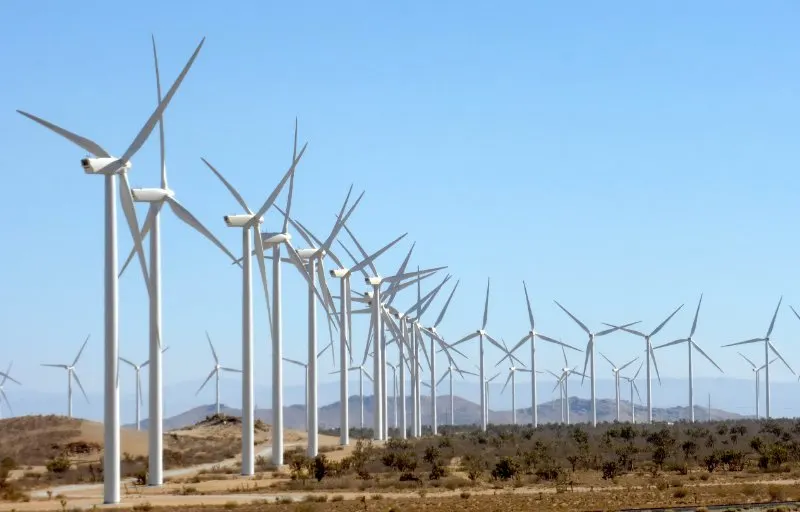
There are key features of wind energy that make it stand out among the rest of the renewable resources.
See Related: Important Pros and Cons of LED Lightings
Requires no external power source
Since wind turbines use the energy from the wind itself to power the turbine, it does not require any electricity, gas, or fuel. This sets it apart from other facilities and geothermal plants.
Types of Turbines
There are two types of turbines: Horizontal Axis Turbines and Vertical Axis Turbines.
- Horizontal Axis Turbines: Horizontal axis turbines have three blades and pivot at the top of the tower.
- Vertical Axis Turbines: This type of turbine is multi-directional, meaning it can adjust with varying wind speeds and directions.
Offshore Turbines are high-energy
Offshore turbines boost energy generation from the strong ocean winds, which can make them effective for large-scale operations.
Distributed wind turbines are the most popular
Distributed wind turbines, which include small turbines, are the most popular type of wind energy resource that can be used for residential, commercial, farming, and small industrial purposes.
Verdict
Overall, is wind energy worth the upfront costs? Is wind energy a safe, reliable, and useful renewable energy source?
In short, yes. Wind energy has low operating costs, avoids burning fossil fuels, lowers energy prices, conserves water resources, prevents rapid climate change, and boosts the wind power industry.
If you are a residential homeowner, using wind energy can help lower electricity costs, avoid extending power lines, and provide off-grid power. Homeowners should consider using wind energy if their home has 1+ acres of land, their local zoning codes permit the installation, and they are financially stable to make a long-term investment.
For businesses, using wind energy can help cut down on energy bills and provide the required energy. Wind turbines can produce reliable energy that provides a low-cost continuous power source, numerous tax advantages, greater energy control, and better environmental sustainability.
Overall, wind energy can help homes, small-scale businesses, wind farms, large-scale operations, and countries as a whole boost their efficiency, lower costs, and reduce their impact on the environment. Implementing more wind turbines across the world will require an upfront investment and infrastructure, but the far-reaching effects will far outweigh the initial costs.
Frequently Asked Questions
If you are wondering about the pros and cons of wind energy, check out these frequently asked questions.
How much wind energy is currently being used in the United States?
Wind farms are currently the largest renewable energy source in the United States, providing over 10% of the country’s power. Over 7,000 wind turbines are producing reliable power to serve over 40 million homes.
Does wind energy stop and start?
Since wind energy uses the power of the wind to provide power to a wind turbine, the ebb and flow of natural wind can cause a short disruption in the wind power source. However, wind forecasts can provide predictions that can help improve the accuracy and implementation of wind energy.
Can a power system be run using solely wind energy?
Although wind energy stops and starts due to the fluctuation of the wind, a power system can still be run using only wind energy. There is an operating reserve within a wind turbine that can produce extra energy during periods of slow wind gusts.
Is there a limit to wind energy?
Many people may wonder if there is a limit to how much wind energy can be incorporated into the power grid. Even though adding wind energy will require more resources, it can be done — but this requires a country or company to figure out how and at what cost.
Does wind energy create new employment opportunities?
In short, yes. Considering all countries around the world, wind energy contributes to thousands of jobs per year. Solar photovoltaic, fossil fuels, and hydropower all contribute to more employment than wind energy. However, wind energy contributed to 1,371.4 average jobs for the entire world.
Is the world investing in renewable energy?
Yes, the investment in recent years has grown. In 2018 alone, the world contributed over 300 billion to renewable energy sources. The country investing the most in renewable energy was China, followed by Western Europe and America.
How do households access wind energy?
Wind energy is more straightforward than you may think. The turbines on most wind farms connect to the electric power grid. This way, the wind from the air can directly power the turbines, which will direct this power to the electrical source. Once the wind energy is in the system, the operators will then redirect this usable power to needed locations.
Distribution lines can channel this electricity to a larger network over long distances. In addition, smaller lines can deliver electricity to small farms, homes, and businesses.
Related Resources
- How Solar Land Developers Can Benefit from Going Solar
- Best Home Energy Saving Products to Buy Today
- Important Pros and Cons of Hydroelectric Energy

